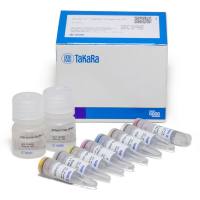A Guide to Yeast Two-Hybrid Experiments(酵母双杂交实验指南)
互联网
Russell L. Finley, Jr.1~undefined
1Center for Molecular Medicine and Genetics and Department of Biochemistry and Molecular Biology, Wayne State University
School of Medicine, Detroit, MI 48201, USA
~undefinedCorrespondence:
rfinley@wayne.edu
Introduction
The yeast two-hybrid system is a powerful genetic assay for protein-protein interactions (Chien et al., 1991; Fields and Song, 1989). The system has been used in thousands of studies, which include everything from mapping the contact domains for individual pairs of proteins to identifying the entire protein interaction network, or “interactome,” for a whole organism (Brent and Finley, 1997; Cusick et al., 2005; Fields, 2005). The assay is carried out inside the nucleus of the yeast Saccharomyces cerevisiae, where the two proteins to be tested are expressed as hybrid molecules (Figure 1A). One is fused to the DNA-binding domain (BD) of a transcription factor such as Gal4 or LexA, and the other is fused to a transcription activation domain (AD). If the two proteins interact, the activation domain is brought to the promoter of reporter genes containing binding sites for the DNA-binding domain, and the reporters are transcribed. The reporters are usually one or more genes required for growth on selective media and the Escherichia coli lacZ gene encoding β-galactosidase. Thus, the assay is fairly simple in principle: if the yeast grow on selective media or turn blue on X-gal indicator plates, an interaction between the two proteins is suggested. In practice, the assay can lead to appreciable numbers of false positives and false negatives (von Mering et al., 2002). Moreover, interpretation of two-hybrid results can be confused by the diversity of two-hybrid systems and the variety of applications and protocols that have been used. This article discusses some of the critical parameters in the design and interpretation of two-hybrid experiments in the context of three common applications: binary twohybrid assays, library screens, and high-throughput screens.
False Positives
All protein interaction assays generate false positives and the two-hybrid system is no exception. A false positive is an interaction reported by the assay that does not actually occur in a biological setting. It is useful to distinguish two types of false positives. So-called technical false positives arise when the reporter genes become active independent of an interaction between the hybrid proteins. The most common cause is a BD fusion protein that activates the reporters on its own without the AD fusion. There are also rare cases where the AD-fused protein activates the reporters on its own, presumably by binding to the promoter or to promoter-associated proteins. Technical false positives can also arise by genetic or epigenetic changes in the yeast that result in increases in reporter activity. These relatively rare events can lead to many false positives when a large number of yeast cells are plated onto reporter selective media, as in a library screen. Although technical false positives are a nuisance, most two-hybrid protocols include steps to minimize their number and to identify those that arise, as discussed below.

Figure 1. Yeast Two-Hybrid Assays
(A) The mating assay. One haploid yeast strain expresses the DNA-binding domain (BD) fused to a protein (X). The other haploid strain expresses a transcription activation domain (AD) fused to another protein (Y). The strains contain reporter genes with upstream binding sites for the BD. Upon mixing the two strains together, they will mate; that is, a haploid cell from each strain will fuse to form a single diploid cell containing both hybrids. The diploid cells can be assayed for reporter gene activity by testing for growth on selective media or β-galactosidase activity (from the lacZ reporter). (B) Screening approaches. Library and high-throughput screens are based on some variation of either a “matrix” or “library” method. The matrix method is the most reliable because it directly measures binary interactions between individual AD and BD strains and can include all of the controls discussed in Table 1. The matrix approach, however, would be challenging to carry out with thousands of BD and AD strains. High-throughput library screens have been conducted that use sequencing to identify the interacting partners selected from a pooled mating. If the pools are derived from AD or BD arrays, the positives can be confirmed in subsequent matrix-style binary assays. However, if individual clones are not available for each interacting pair, higher confidence can be gained for an interaction by isolating it multiple times in the library screen. More recent high-throughput screens have used pooling schemes to mate arrayed libraries. Reprinted from Parrish et al. (2006), with permission from Elsevier.









